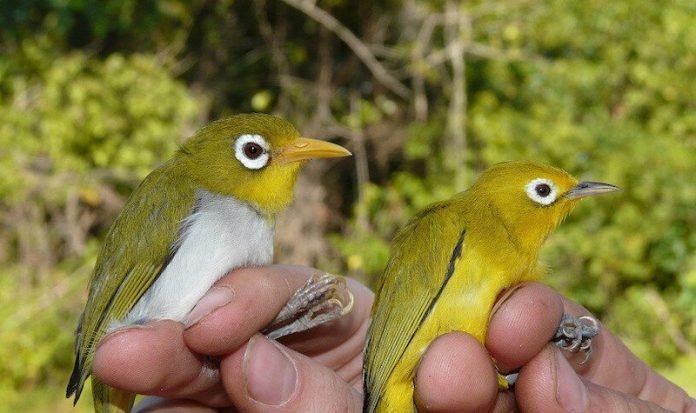
In a new study, scientists have discovered two new bird species.
The two beautiful new bird species were found in the Wakatobi Archipelago of Sulawesi, Indonesia.
They are called the Wakatobi white-eye and the Wangi-wangi white-eye.
The research was conducted by a team of zoologists from Trinity College Dublin, Halu Oleo University (UHO) and Operation Wallacea.
The team has been studying birds on Sulawesi, in Indonesia, and its offshore islands since 1999.
The place is in the middle of Indonesia, at the boundary between Asian and Australian species.
It has an unusually high number of endemic species even when ocean levels dropped.
In the current study, the team used a modern research approach to study bird species separation.
They incorporated genetic, body size and song measures as a means of comparing organisms.
Previous research has shown that white-eyes as a group have spread and speciated more rapidly than any other birds.
In the study, the team found that the two species are very different.
The Wakatobi white-eye is found throughout the Wakatobi Islands and split from its mainland relatives in the last 800,000 years.
The Wangi-wangi white-eye is a much older species found on only one tiny island, and its closest relatives were found more than 3,000 km away!.
The researchers suggest that living on only one tiny island means the Wangi-wangi white-eye is very vulnerable to habitat loss.
The findings show the unique species special to the Wakatobi Islands. They may help scientists safeguard the remaining habitats on the islands.
The team hopes to have the islands recognized as an Endemic Bird Area in the near future.
The leader of the study is Professor Nicola Marples from Trinity College Dublin.
The study is published in the Zoological Journal of the Linnean Society.
This is the same journal in which Alfred Wallace and Charles Darwin published their game-changing original ideas about speciation in 1858.
Copyright © 2019 Knowridge Science Report. All rights reserved.



